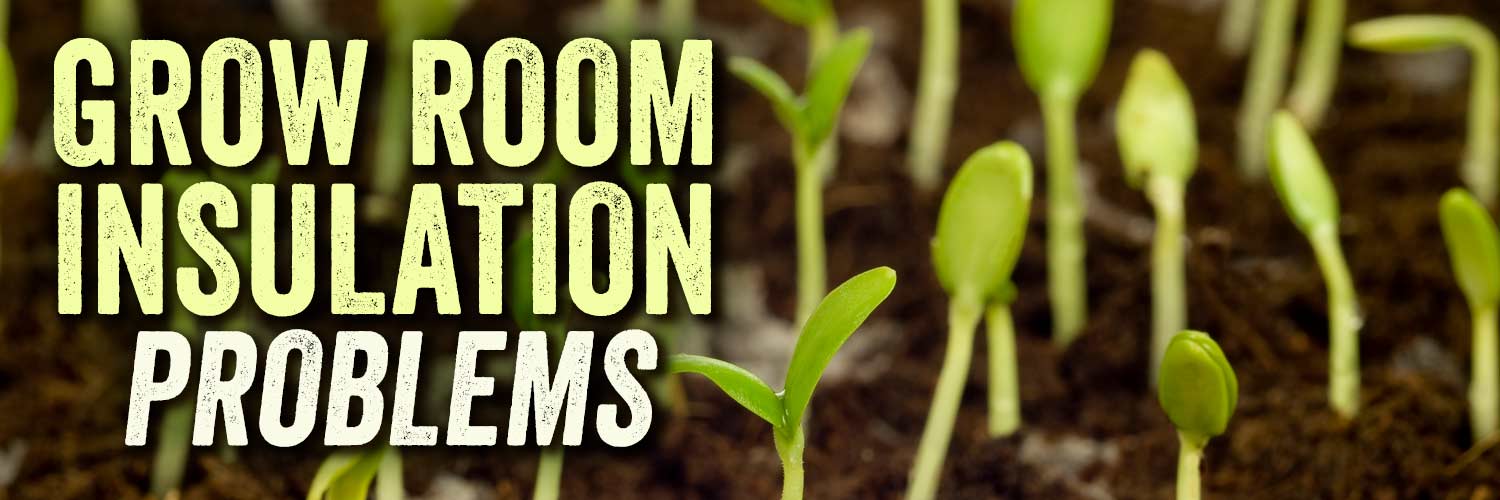Grow Room Insulation Problems


A lot can go wrong with your crop, but did you know some of it can be caused by your grow room insulation?
Growing marijuana can be a fickle endeavor because the environment needs to be just right. The insulation in the space you decide to grow, whether in your basement or a pole barn, must be able to help create the atmosphere needed to start and maintain a healthy crop.
In 2018, Michigan became the tenth state to legalize recreational marijuana. In that time, we have been helping more and more business owners get their grow rooms exactly how they need them with the help of spray foam insulation.
With this experience, we understand the grow room insulation problems that plague those trying to cultivate marijuana.
5 Grow Room Insulation Problems
When it comes to growing marijuana, the environment you create in your grow room is crucial.
The right insulation can make all the difference, but the wrong choice can lead to some pretty frustrating issues. So, let's talk about how to insulate a grow room and avoid these common problems.
The solution to this problem is to opt for foam insulation. Spray foam insulation in your grow room won't hold onto that moisture. It's a simple way to keep your grow room in top shape.
Your Grow Room Insulation is Retaining Moisture
Marijuana thrives in a specific humidity range, but that same humidity can cause headaches if your insulation is holding onto moisture.
Materials like fiberglass and cellulose can trap moisture, leading to mold and mildew -- definitely not what you want in your grow room.
Temperature Fluctuations in Your Grow Room
Keeping a steady temperature is key to a successful grow, but if your grow room isn't properly sealed, you might find yourself battling air leaks that mess with your climate control.
If your insulation isn't up to the task of blocking air movement, your plants could suffer.
Using insulation that creates an air seal ensures the air you want stays in and the outside elements stay out. This air seal helps you create and maintain a constant temperature in your grow room.
Grow Room Humidity Control
Unlike most spaces where you try to avoid humidity, your grow room needs to hit a specific level.
But if your insulation retains moisture or lets air leak, hitting that perfect humidity range becomes a challenge.
Closed cell spray foam is a fantastic option for grow room insulation. It helps regulate temperature and keeps humidity in check, creating the perfect environment for your plants.
Odor Containment
If your grow room is smelling a bit too strong, it could be because your insulation is letting air -- and odors -- escape.
This can be particularly troublesome if your grow room is inside your home.
Again, an air-tight seal with the right insulation can help keep those smells contained.
Overworked HVAC
If your insulation isn't doing its job, your HVAC system might be working overtime to maintain the right temperature and humidity.
This not only drives up your energy costs but can also strain your HVAC system unnecessarily.
Choosing insulation that helps maintain the ideal conditions for your grow room, giving your HVAC a break and saving you money in the process.
Best Insulation for Grow Rooms
When it comes down to it, you have to make the decision about what insulation will work best for your grow room.
With that being said, Marijuana Venture recommends insulating the envelope of the room or building with closed cell spray foam. This is because it creates an air seal and doesn’t retain moisture. This is also true of open cell foam.
If you’d like to learn more about the benefits of foam insulation, check out the Learning Center on our website.
Related Articles
What is the Best Insulation for a Grow Room?
Top 10 Frequently Asked Questions About Spray Foam Insulation for Grow Rooms
Which Spray Foam Insulation is Best for My Grow Room: Open Cell or Closed Cell?
About Amanda Emery
Amanda previously has worked as a breaking news and crime reporter, TV news producer, and editor in Flint and Detroit. Throughout her career as a journalist, she has won several awards from The Society of Professional Journalists - Detroit Chapter and the Michigan Press Association. As part of the RetroFoam of Michigan family, Amanda uses her experience as a journalist to write content that will help educate homeowners on the benefits of foam insulation. When Amanda isn’t writing, she’s spending time with her husband and rescued huskies. She also loves knitting, making art, cooking, and hosting dinner and a movie night for friends and family.


